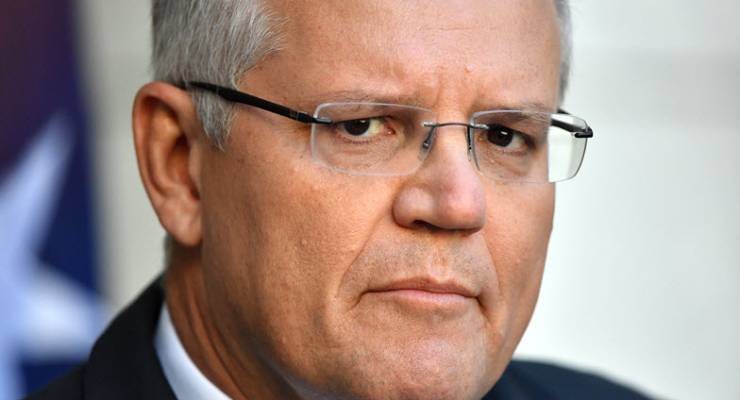
Australia, finally, will go to the polls on May 18, after Prime Minister Scott Morrison visited the governor-general this morning to call an end to the 45th parliament.
And more than most elections, this one will be shaped by the parliament that preceded it.
The 45th parliament was a disaster for Australian democracy unlike any seen since 1975. Beginning with Malcolm Turnbull’s failure to secure a decent majority and proceeding through the removal of large numbers of MPs and senators, including the entire leadership of the Nationals, by constitutional provisions around citizenship, allegations of sexual harassment against Barnaby Joyce that drove him out of the deputy prime ministership, the sacking of Sam Dastyari for links with a Chinese billionaire, a deeply wounding referendum on marriage equality, the racist circus of One Nation and its ever-splintering senators, through to the removal of Turnbull by the far right of his own party for adopting even a token policy addressing climate change, the 45th parliament was a blazing garbage heap.
Through it all, household incomes stagnated as wages for many in the private sector went backwards. The banking royal commission to which Turnbull was reluctantly dragged revealed the extent of business corruption and failure by the government and its regulators. Climate policy literally went backwards, to 2009. Energy policy was left in disarray. Failure in aged care required another royal commission. The government’s signature 2016 election policy, company tax cuts, were abandoned. The only positive was persistent strong jobs growth — but never enough to deliver the wages growth that the government endlessly promised just around the corner. From a policy perspective, it was nearly as much a debacle as the parliament itself.
The policy failure was driven by politics, of course, but also because the collapse of neoliberalism set an ideological challenge a Coalition government could only respond to on an ad hoc and patchwork basis. Hoping to offer traditional neoliberal solutions — company tax cuts, an embrace of disruption, deregulation, opening borders to goods and people to regional countries via “free” trade agreements — the Turnbull government instead found itself pursuing interventionism literally unthinkable a few years ago in areas like energy and finance.
On each issue, Labor has more swiftly read the electoral mood than its opponents, and shifted to the left. On some policies, the Coalition moved even further left — after deriding Labor’s “national interest” policy on gas exports as socialist mania at the 2016 election, the Coalition ended up threatening gas reservations and proposing a power to break up power companies. But by and large the 45th parliament was a story of the party of Australian neoliberalism desperately trying to keep up with an opposition that had re-embraced its pre-1980s roots.
The political driver of that contest was electoral disillusion, a sense that the political-economic system had stopped working for the community and was only delivering for elites. That manifested itself in the rise in support for independents and growing disaffection toward politics as a whole (the 2016 election was marked by a substantial drop in voter turnout despite compulsory voting).
Within the crawlspace of the far right, however, something far darker had stirred: the 2016 election and the subsequent citizenship debacle had delivered into the Senate a foul mix of racists, who ended up fighting as much among themselves as with their intended opponents, backed by violent neo-fascists active online and, occasionally, on our streets; tragically, Australia would export its right-wing extremism to New Zealand with sickening results in March.
The 2019 election, then, will be a contest between a Coalition with its ad hoc response to the death of neoliberalism and a Labor Party with a more coherent, more interventionist and more risky platform, each vying to convince the electorate that the system can be made to work for it. Scott Morrison’s tactics borrow heavily from those of John Howard: offer tax cuts, funded by his extraordinarily high rate of tax: GDP, to attract voter support while hosing down political fires with cash, regardless of policy consistency. This will be backed by scare campaigns run in conjunction with News Corp on how dangerous Labor is and the threat it poses to particular interest groups.
Labor has a more coherent policy set — the most developed since the ill-fated Fightback! package — designed to shut down some of the more egregious flaws of the tax system that favour the wealthy, pour more money into health and education and prioritise tax relief for low- and middle-income earners, while promising, somewhat vaguely, to lift wages growth. It also has at least a pencil sketch of a climate policy, putting it well in advance of the Coalition, which literally has an anti-policy, in which any effort to develop one internally leads to civil war.
The coming five weeks, whatever the cavalcade of cliches and lies, will thus demonstrate whether tax cuts, targeted spending and scare campaigns aided by Australia’s largest media company can convince voters to stick with an unsatisfactory status quo, or Labor’s pitch that it understands and will address the deep-seated economic disaffection of the electorate will resonate. But no matter the result, at least the wretched 45th parliament will be history.








Crikey is committed to hosting lively discussions. Help us keep the conversation useful, interesting and welcoming. We aim to publish comments quickly in the interest of promoting robust conversation, but we’re a small team and we deploy filters to protect against legal risk. Occasionally your comment may be held up while we review, but we’re working as fast as we can to keep the conversation rolling.
The Crikey comment section is members-only content. Please subscribe to leave a comment.
The Crikey comment section is members-only content. Please login to leave a comment.